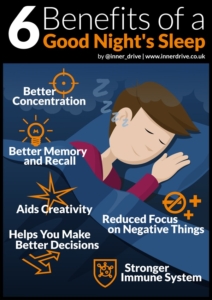Derek Thompson looked into why American Teens Are So Sad and identified Four forces that are propelling the rising rates of depression among young people. From 2009 to 2021, the share of US high-school students who say they feel “persistent feelings of sadness or hopelessness” rose from 26 percent to 44 percent, according to a new CDC study. This is the highest level of teenage sadness ever recorded.
So why is this happening?
There are several answers purposed to that question, along with one meta-explanation that ties them together. Here are four forces propelling that increase.
1. Social-media use
Five years ago, the psychologist Jean Twenge wrote an influential and controversial feature in The Atlantic titled “Have Smartphones Destroyed a Generation?” based on her book iGen. Around 2012, Twenge wrote, she had noticed that teen sadness and anxiety began to steadily rise in the U.S. and other rich developed countries. She looked for explanations and realized that 2012 was precisely when the share of Americans who owned a smartphone surpassed 50 percent and mobile social-media use spiked.
In the past few years, scientists have disputed the idea that social-media use itself makes teenagers miserable. “There’s been absolutely hundreds of [social-media and mental-health] studies, almost all showing pretty small effects,” Jeff Hancock, a behavioral psychologist at Stanford University who has conducted a meta-analysis of 226 such studies, told The New York Times recently.
2. Sociality is down
Both Steinberg and Twenge stress that the biggest problem with social media might be not social media itself, but rather the activities that it replaces. “I tell parents all the time that if Instagram is merely displacing TV, I’m not concerned about it,” Steinberg told me. But today’s teens spend more than five hours daily on social media, and that habit seems to be displacing quite a lot of beneficial activity. The share of high-school students who got eight or more hours of sleep declined 30 percent from 2007 to 2019. Compared with their counterparts in the 2000s, today’s teens are less likely to go out with their friends, get their driver’s license, or play youth sports.
The pandemic and the closure of schools likely exacerbated teen loneliness and sadness. A 2020 survey from Harvard’s Graduate School of Education found that loneliness spiked in the first year of the pandemic for everyone, but it rose most significantly for young people. “It’s well established that what protects teens from stress is close social relationships,” Steinberg said. “When kids can’t go to school to see their friends and peers and mentors, that social isolation could lead to sadness and depression, particularly for those predisposed to feeling sad or depressed.”
3. The world is stressful—and there is more news about the world’s stressors
Lisa Damour, a clinical psychologist and author, told me that no single factor can account for the rise of teenage sadness. But she believes a part of the answer is that the world has become more stressful. Or, at least, teenagers’ perception of the world seems to be causing them more stress.
“In the last decade teenagers have become increasingly stressed by concerns about gun violence, climate change, and the political environment,” she wrote in an email. “Increased stress among young people is linked to increasing levels of sadness. Girls, more than boys, are socialized to internalize distress, meaning that they tend to collapse in on themselves by becoming depressed or anxious.”
4. Modern parenting strategies
In the past 40 years, American parents—especially those with a college degree—have nearly doubled the amount of time they spend coaching, chauffeuring, tutoring, and otherwise helping their teenage children. The economist Valerie Ramey has labeled this the “rug rat race.” High-income parents in particular are spending much more time preparing their kids for a competitive college admissions process. When I interviewed Ramey about her work in 2019, she told me that she “couldn’t believe the amount of pressure our friends were putting on their kids to get ready for college.”
The “rug rat race” is an upper-class phenomenon that can’t explain a generalized increase in teenage sadness. But it could well explain part of what’s going on. And in the 2020 Atlantic feature “What Happened to American Childhood?,” Kate Julian described a related phenomenon that affects families a bit more broadly: Anxious parents, in seeking to insulate their children from risk and danger, are unintentionally transferring their anxiety to their kids.







